Pomeranian
The cutest dog in the world?
If you think that a haircut doesn’t make a dog, read this article to see how wrong you can be :). A Pomeranian with a proper haircut undergoes a full transformation and becomes the cutest dog in the world.
Pomerania is a region by the sea. The Pomeranian is also the name of a dog breed. What does Pomeranian have in common with dogs originating from primitive working breeds from cold, Eurasian north?
FCI Classification
- Group 5: Spitz and primitive types
- Section 4: European Spitz
- Type: Spitz
- Working trial: not subject
- Other names: Toy German Spitz, Pom, Pom Pom
- Origins: Germany
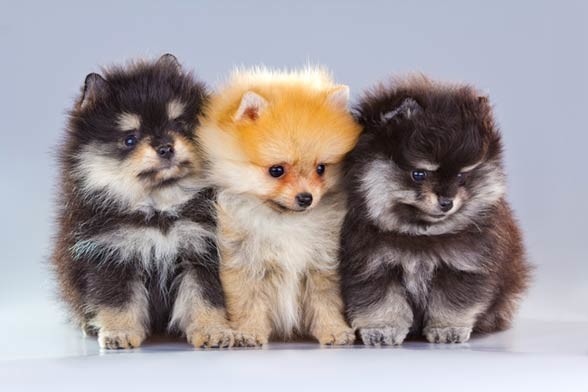
History of the breed
The name comes from the Pomerania region – a Polish-German shore. However, this region was not the place of origins, although the breed developed there. One of the theories says that the ancestors of these dogs arrived in the Pomerania region with Scandinavian carters.
This small dog originates from primitive types of larger Spitz type dogs working in difficult conditions of the Arctic climate. They were used mostly for sheep herding. At the end of the 19th century the British Kennel Club first recognized the Pomeranian as a separate breed . Queen Victoria started breeding these dogs in 1888, and thanks to that the breed became very popular in England.
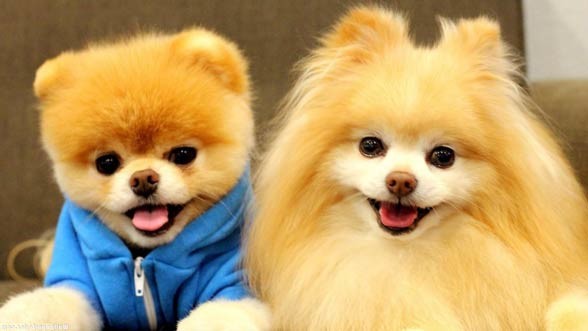
Characteristics
Appearance
The Pomeranian is a tiny toy dog. On the wedge-shaped head there is a straight and relatively short muzzle with a nose whose color depends on the hair coloration. There are almond-shaped, dark eyes below the muzzle. On the top of the head there are small, erect ears. The body ends with a feathery tail, flat on the rump.
The top coat is long, straight and coarse, and the underfur is thick, soft and short. There is a big ruff around the neck, and a ruffle on the chest. It is recommended to cut the hair every 1-2 months.
There are many color variations found, including red, orange, cream, blue, brown, tan pointed, white, brindle, parti-colored, and many more. The earliest known Pomeranians were white, sometimes brown or black. Queen Victoria introduced red Pomeranians – this breed became very popular at the end of the 19th century.

Temperament
The Pomeranian seems to be an innocent, gentle dog, but don’t let it fool you. In fact, the Pomeranian is proud and lively, intelligent and willing to learn, and also loyal towards its owners. It’s a great, quickly attaching family companion. It’s full of feeling so it will show them eagerly.
It’s naturally alert, active and curious about the environment. At the same time it’s one of the most independent small breeds, therefore, it requires a firm but gentle owner. You cannot let it do everything, because it will become a little terrorist. The Pomeranian has a bossy personality, therefore, it has to understand who the leader of the family is from the beginning.
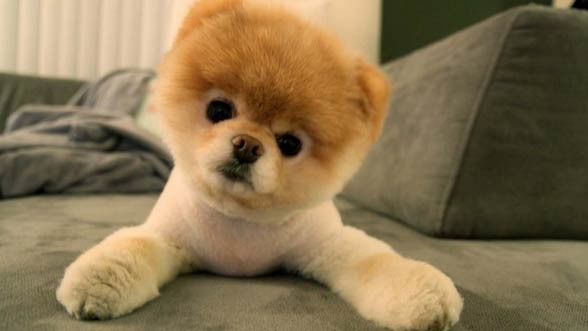
Small dog syndrome
Unfortunately, as many other small breeds, the Pomeranian also has a small dog syndrome. It occurs when the animal has no boundaries. Then, the dog starts to think of itself as a leader of the human pack, also behavioral disorders occur, such as separation anxiety, aggressiveness and nervousness. In extreme cases, the dog can even attack larger dogs. It can also show great distance and aggression towards strangers, which is manifested by excessive barking and growling, and even biting.
It happens that a Pomeranian is choosy towards other domestic animals, but if it’s raised with them since its early years, it shouldn’t cause problems in this area.
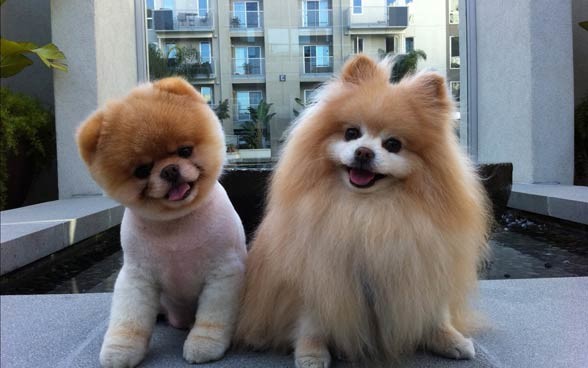
Little guardian
Despite its small size, the Pomeranian is a good guardian that responds with barking to unfamiliar sounds. Therefore, it can bark even at the door bell – you should train this out of your dog.
Carefully with toddlers
Because of its bossy personality and high independence, the Pomeranian is not recommended for families with toddlers. However, if your dog will have enough amount of physical activity, such as walking and playing, it will be calmer, more confident, trustworthy and mentally stable.
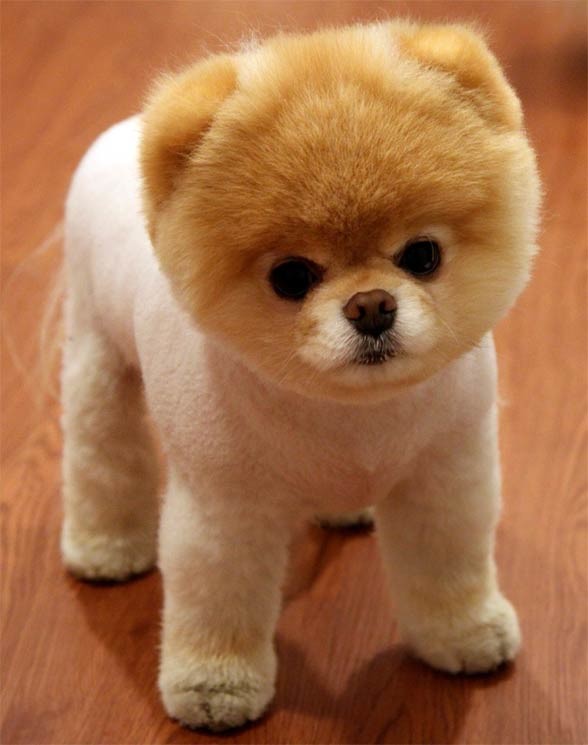
Health
Merle colored Pomeranians struggle with serious health issues. Genes responsible for this type of coloration can cause:
- deafness (from mild to severe)
- increased intraocular pressure
- holes in some structures of the eye (colobomas)
- developmental disorder of the eye (microphthalmia)
- eye disorders, such as near-sightedness, far-sightedness, astigmatism
Merle colored parents’ puppies may also have serious disorders associated with their skeletons, heart or reproductive system.
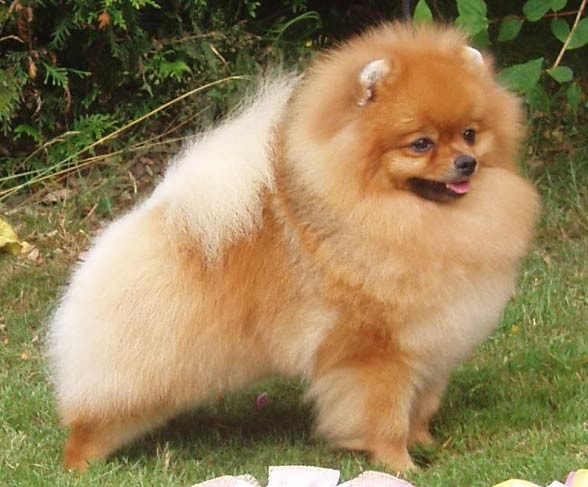
As a breed, Pomeranians suffer from:
- luxating patella
- tracheal collapse
- hair loss combined with skin discoloration
- Cushing’s syndrome
- hypothyroidism
- skin infections
- hormone disorders
- criptochidism in males (one or both of the testicles don’t descend into the scrotum)
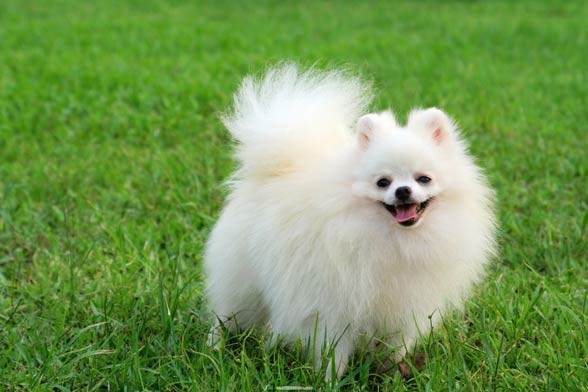
Detailed information and measurements
Pomeranian
- Height at shoulders: 13-28 cm (5-11 in)
- Weight: 1,9-3,5 kg (4.2-7.7 lb)
- Lifespan: 12-16 years
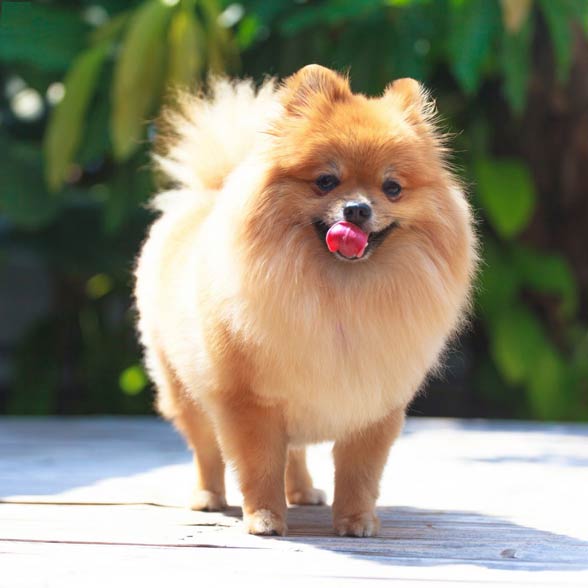
Pomeranian – interesting facts
- Only 3 dogs survived the sinking of the RMS Titanic, among which 2 were Pomeranians.
- The Pomeranian is closely related to such breeds as the Siberian Husky, Akita, Alaskan Malamute, and Samoyed.
- Pomeranians are among the most colorful breeds – there are plenty of color and pattern varieties within the breed. The AKC distinguishes as much as 23 of them.
- The best-known owners of Pomeranians include: Michelangelo, Marie Antoinette, and Wolfgang Amadeus Mozart.
- A Pomeranian named Boo became one of the most popular dogs in the world thanks to his Facebook profile. With his characteristic haircut, he became a global mascot, and has been described as the World’s Cutest Dog. At the time of writing this article, Boo has had over 17 million fans.
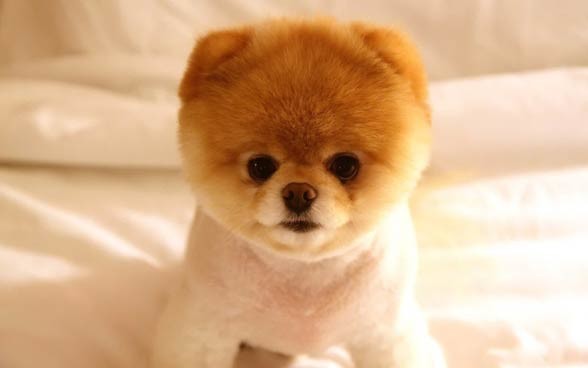

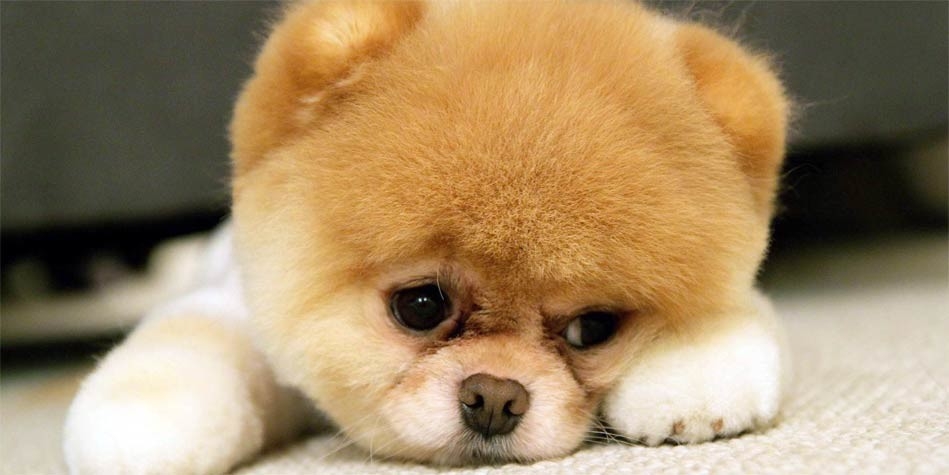







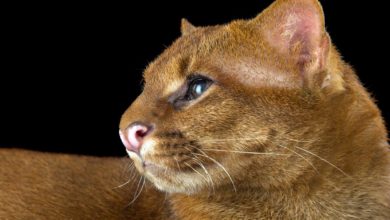
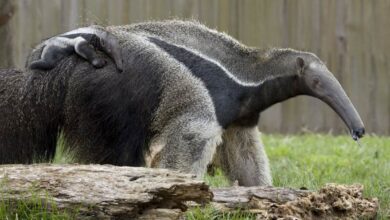


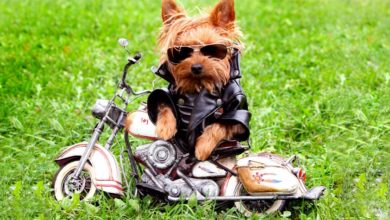


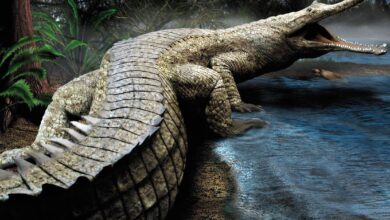


It’s really cute 🙂